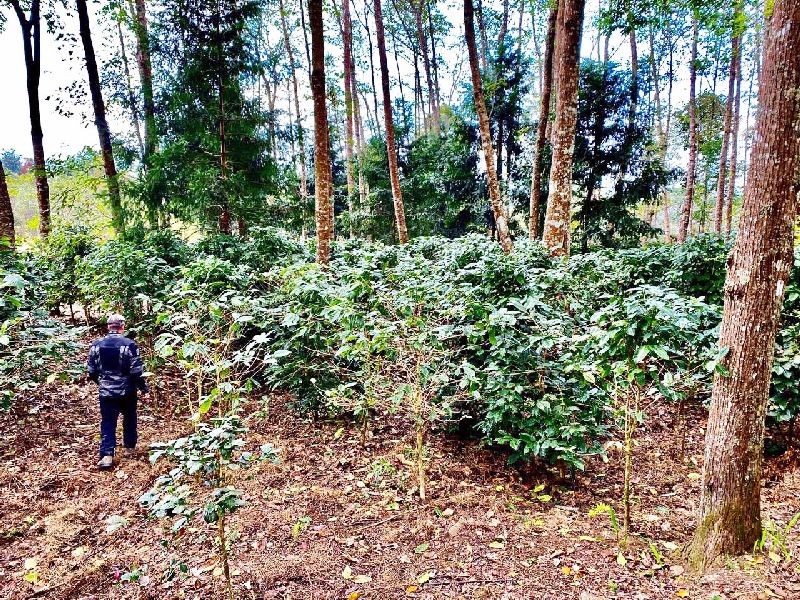A coffee farm in Wokha district. (Photo Courtesy: Nagaland Coffee)

Kanili Kiho
Pughoboto | October 1
International Coffee Day on October 1 is an occasion for the global coffee community to share their passionate love for anything related to coffee. It was on October 1, 2015 when coffee lovers from around the world officially celebrated coffee as a beverage in Milan. This decision was taken by the International Coffee Organization (ICO) a year before, in 2014.
Since then, the day is also used to promote fair trade of coffee and support millions of farmers whose livelihoods depend on it. This year, the ICO is working to highlight the plight of coffee farmers, the threat to their livelihoods and the need to take collective action.
Commemorating the recent comeback in coffee farming in Nagaland after a hiatus of nearly three decades, The Morung Express in an attempt to present the prospect of coffee in the State, spoke to government officials, coffee-based enterprises and the growers themselves.
Coffee-based employment
Renben Jami, Director, Land Resources Department (LRD) said the Nagaland Plantation Crops Development Corporation (NPCDC) was the pioneering agency that had established coffee plantation in Nagaland in collaboration with Coffee Board of India (CBI) during 1980-1981. The plantation was then abandoned since 1991 by the NPCDC after which the coffee plantation was handed over to the beneficiaries for further maintenance.
In 2014, the CBI and the LRD together started exploring possibilities of promoting coffee plantation in Nagaland. After series of research and meetings, the CBI and the LRD (Nodal Department) arrived at working partnership to revive old plantations and promote new ones in the state from the year 2015.
The main objective, Jami said is "to produce specialty organic coffee, to generate coffee-based employment for farmers and to promote conservation farming and mitigate the widespread practice of jhuming." He said that Nagaland possesses a 'very favorable agro-climatic condition' suitable for healthy growth of coffee crop. Both Arabica and Robusta coffee varieties are found to be viable in the hilly and low-lying areas of the state respectively.
As per GIS LRD Nagaland, it has been estimated that a total of 10,40,100 hectares (Ha) is suitable for coffee plantation in the State, which is about 62.7% of the State's total geographical area of 16,57,900 Ha. Presently, about 7,996 Ha have been covered in the entire State, which is 0.77% from the overall coffee-suitable area of the State.
The Department has a comprehensive plan to develop 50,000 Ha of coffee in the State by 2027 as envisaged in the Vision Document 2030, shared Jami. Stating that there is a future for the Nagas in coffee farming, Jami called upon each individual to come forward in building together a State, recognized not as a consumer, but a producer too. Till date, 484 villages have been covered under all districts. Based on 2019-2020 data, Mokochung is the largest producing district with production of 4,455kg parchment coffee, Jami informed.
Challenges of the nodal department
While the department expressed confidence that 'this time around, it will be a major success,' Jami also highlighted some of the challenges faced by the department. One challenge, he addressed was, with coffee plantation being highly knowledge-intensive and skill based, this is still scarce among the rural farmers.
"Inadequate extension services and timely supply of processing facilities and also lack of financial and credit facilities against high initial investment are some of the factors that could deter the growth of coffee production," he added.
(This is the first of a three-part series.)
Read the Part II and III Here
Coffee farming in Nagaland-II: Advocating a coffee drinking culture
Coffee farming in Nagaland-III: Farmers speak






